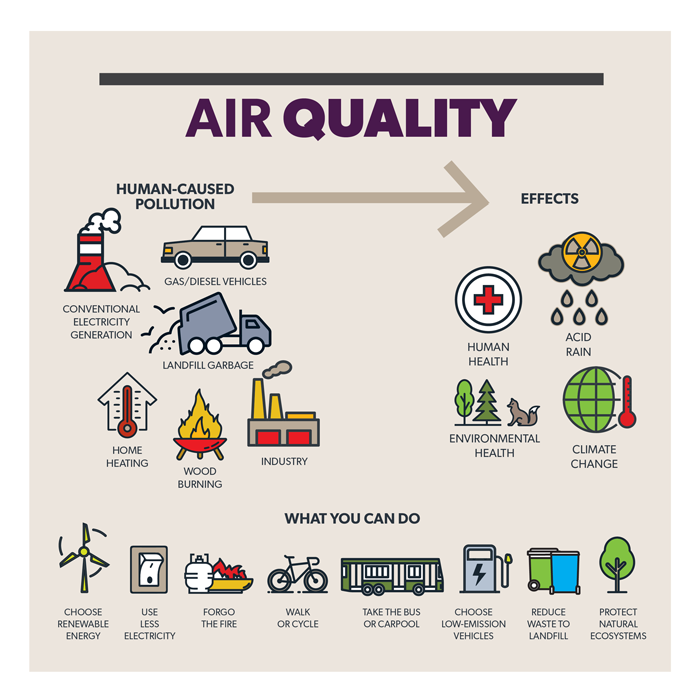Measuring ambient concentrations of airborne pollutants as defined by the Canadian Ambient Air Quality Standards (CAAQS).
| Red | National standards exceeded, advanced action is required by regulations |
| Orange | Action needed to prevent exceeding national standards |
| Yellow | Action needed to prevent air quality deterioration |
| Green | Air quality is good and is maintained through proactive actions |
| 2024 Results - Partly Achieving | |||
|---|---|---|---|
| Baseline (2009) | 2024 Result | Target (2035): not to exceed | |
| Fine Particulate Matter (PM2.5) | Yellow | Yellow | Yellow |
| Ozone (O3) | Yellow | Yellow | Yellow |
| Sulphur dioxide (SO2) | Green | Green | Yellow |
| Nitrogen dioxide (NO2) | Orange | Orange | Yellow |
| Historical results | ||||
|---|---|---|---|---|
| PM2.5 | O3 | SO2 | NO2 | |
| 2024 | Yellow | Yellow | Green | Orange |
| 2023 | Yellow | Yellow | Green | Orange |
| 2022 | Yellow | Yellow | Green | Orange |
| 2021 | Orange | Yellow | Green | Orange |
| 2020 | Orange | Yellow | Green | Orange |
| 2019 | Orange | Yellow | Green** | Orange** |
| 2018 | Orange | Yellow | Green** | Orange** |
| 2017 | Orange | Yellow | Green** | Orange** |
| 2016 | Yellow | Yellow | Green** | Orange** |
| 2015 | Orange | Yellow | Green** | Orange** |
| 2014 | Orange | Yellow | Green** | Orange** |
| 2013 | Red | Yellow | Green** | Orange** |
| 2012 | Red | Yellow | Green** | Red** |
| 2011 | Red | Yellow | Green** | Orange** |
| 2010 | Orange | Yellow | Green** | Orange** |
| 2009 | Yellow | Yellow | Green** | Orange** |
** Prior to 2020, SO2 and NO2 were calculated differently and were not assigned colours. These are unofficial estimates as to what the status would have been.
